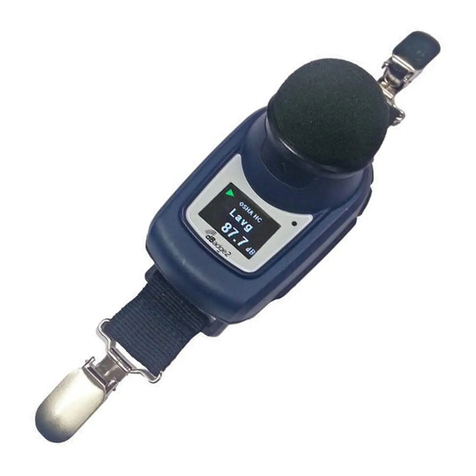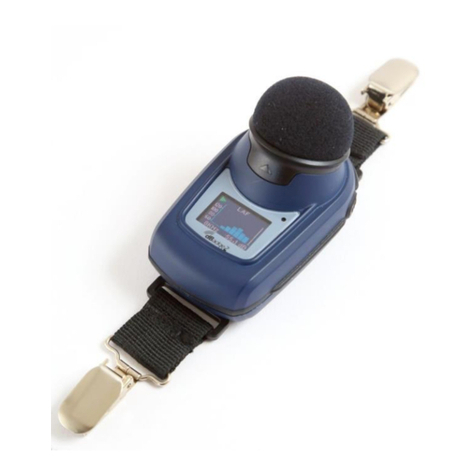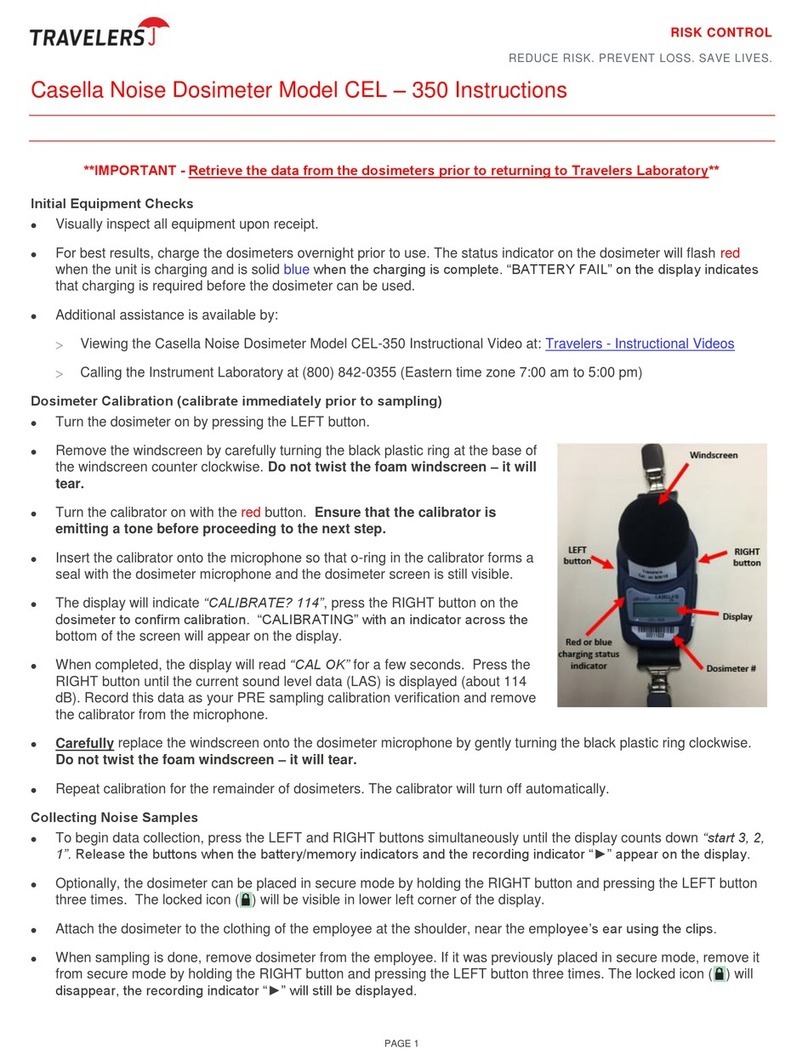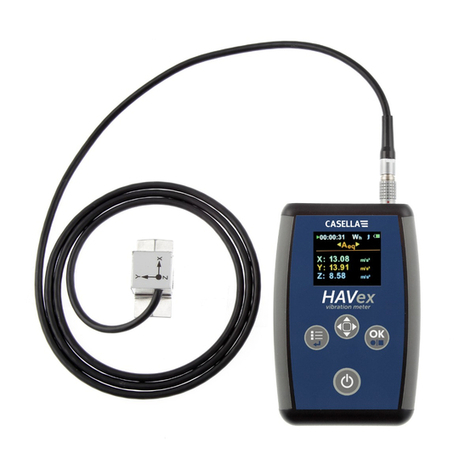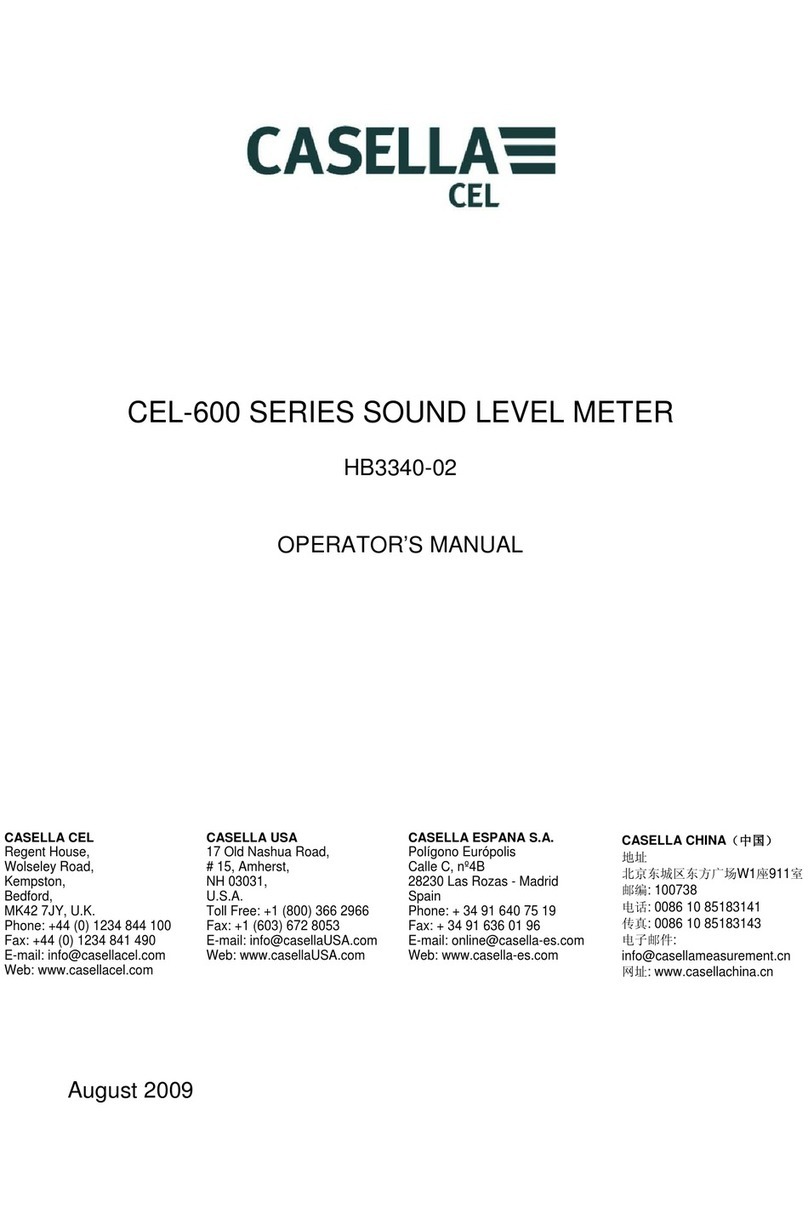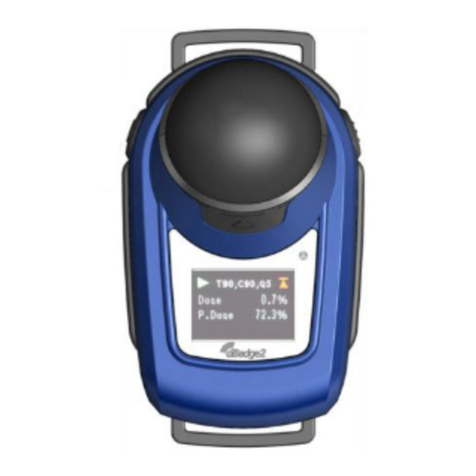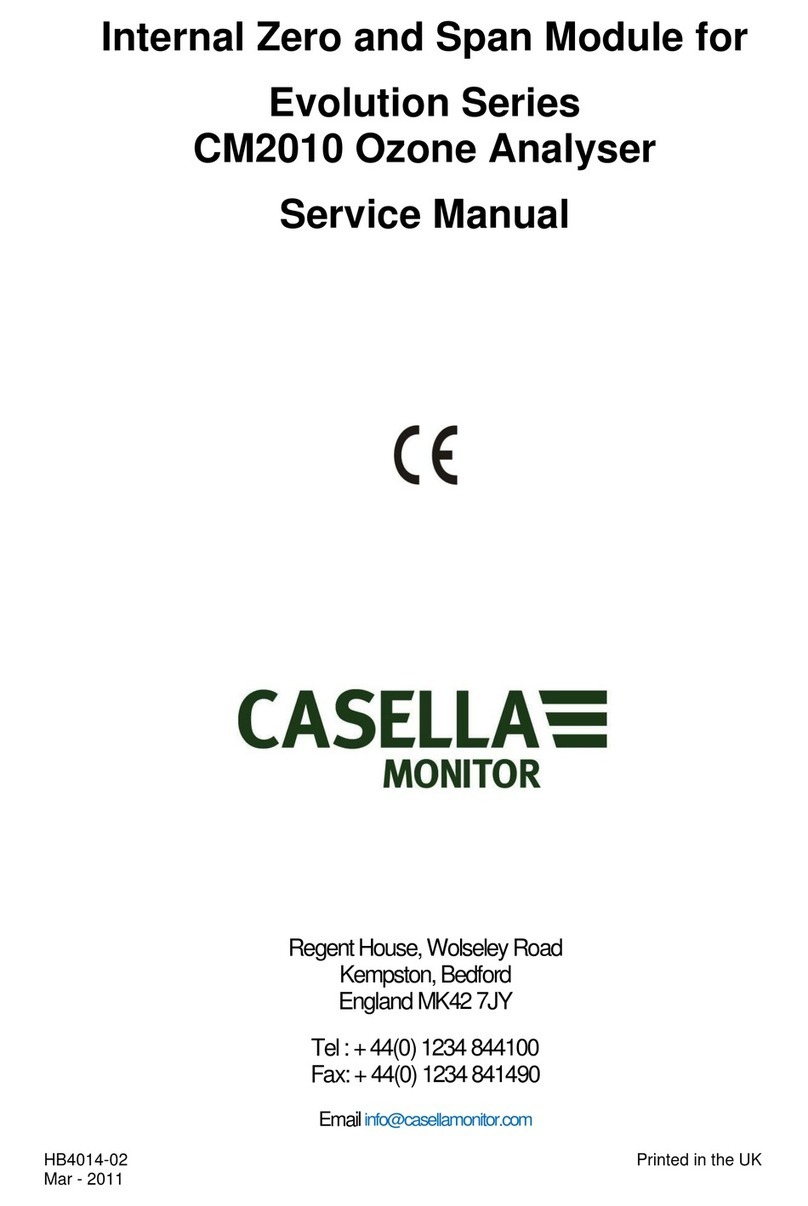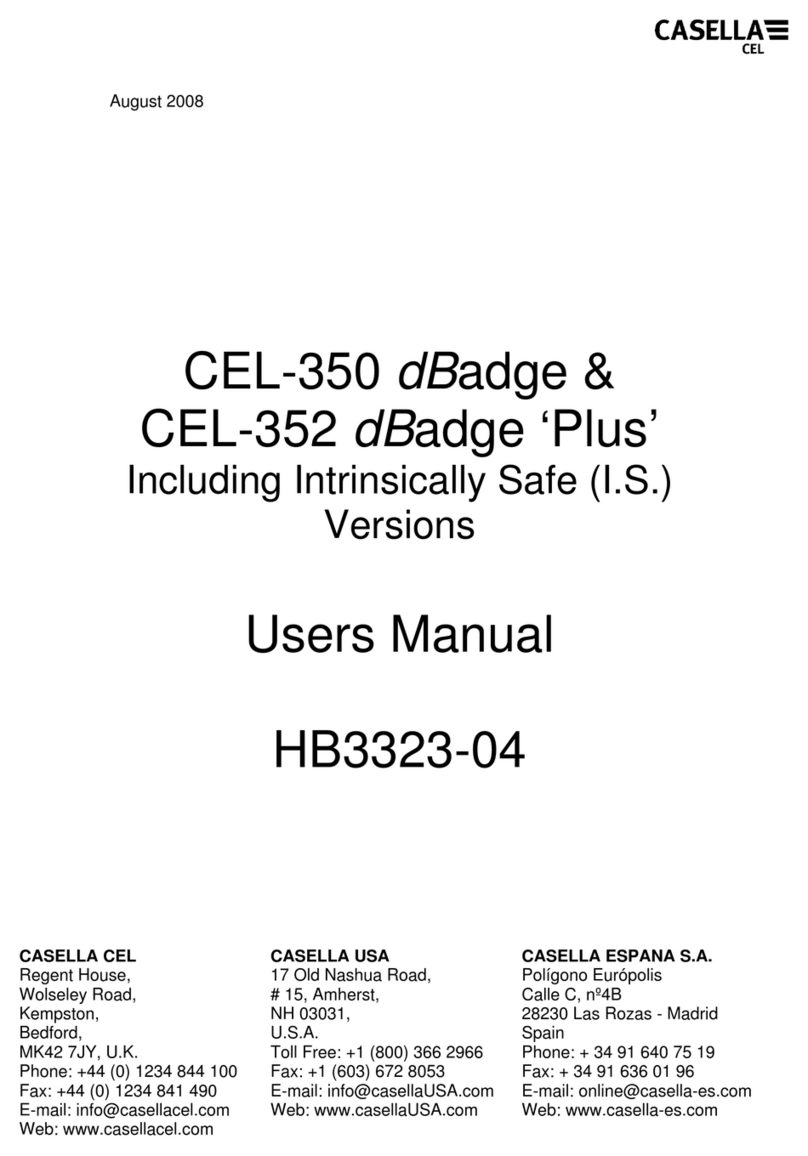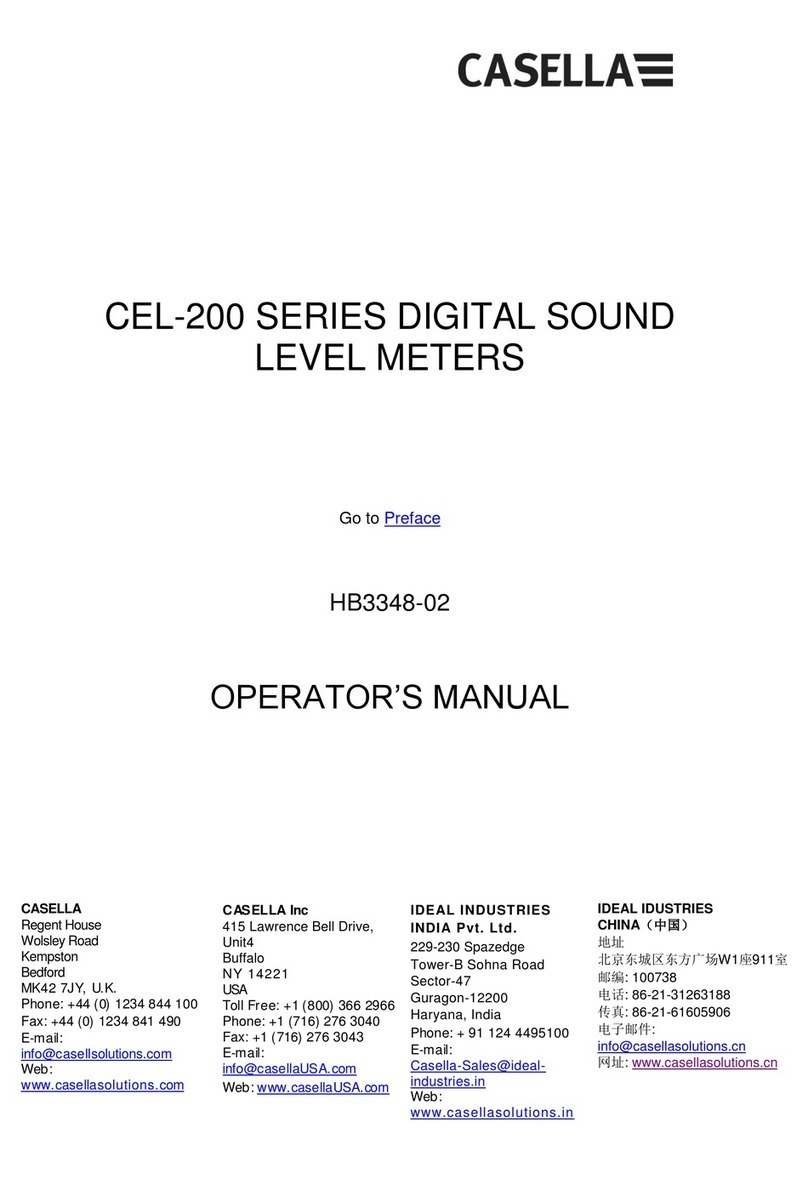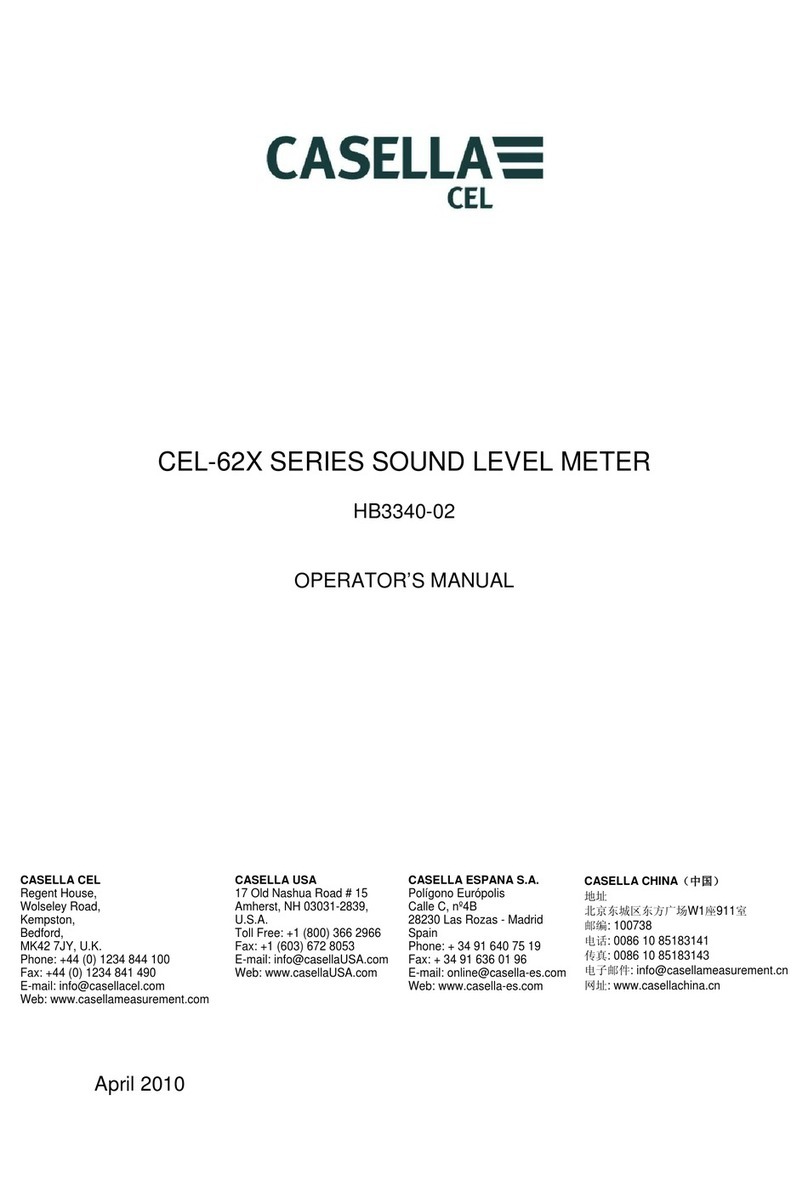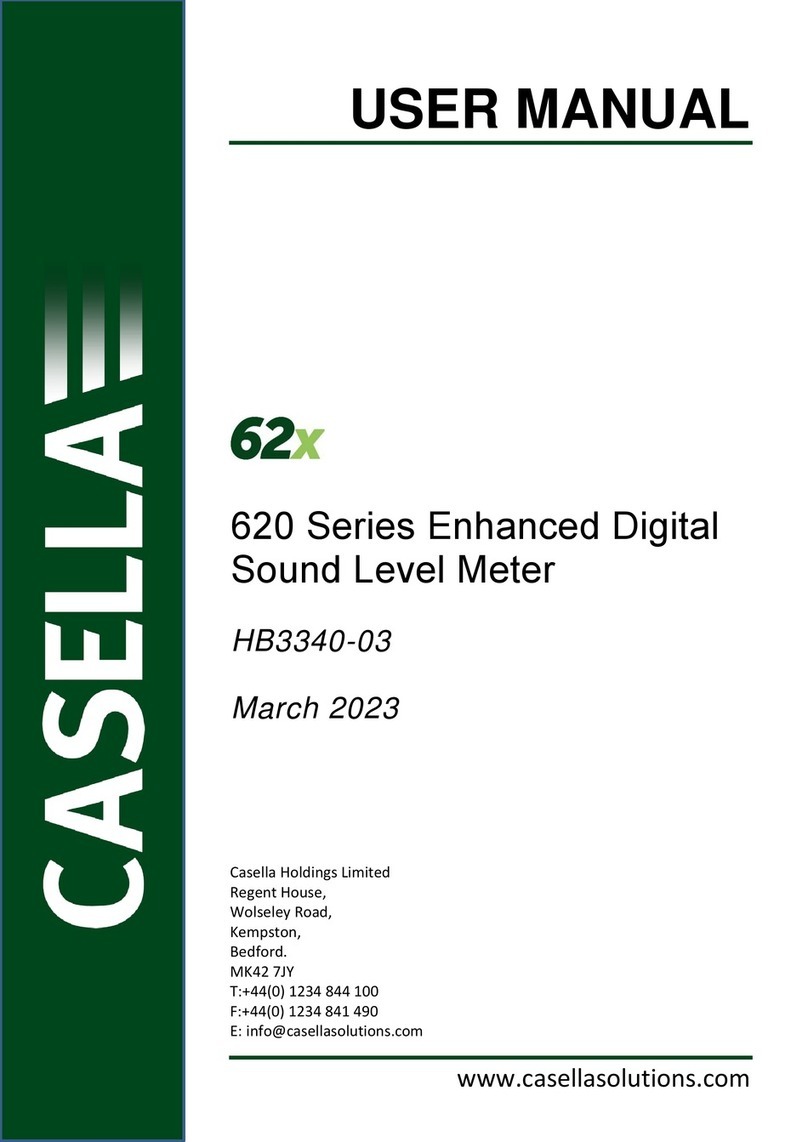
However, all sound
level measurement
parameters can be set from
the keypad. There are three
overlapping measurement
ranges: 30 - 100, 50-120 &
70-140 dB, A & C RMS
weightings, Linear & C Peak
weightings, Fast, Slow &
Impulse time weightings, and
energy exchange rates (Q) of
3, 4, 5 & 6. In dose measure-
ment mode, they display %
dose, % dose projected for
an 8 hour period, peak level
and measurement duration.
For countries that are subject to European Union regulations or
the equivelent ISO standards, these instruments measure the daily
sound exposure level (LAeq,8hr Pa2h according to IEC 1252, which is
identical with the LEX,8h required by ISO 1999), while for USA
OSHA/MSHA regulations they measure the Time Weighted Average
level (TWA).
When used as a sound level meter they display sound level,
maximum sound level, minimum sound level, peak, time-averaged (LAeq
or LAvg) sound levels and sound exposure level (SEL).
4.3 CEL-360/360S Logging Noise Dosimeters
In addition to the features available to the CEL-320 Dosimeters, the
following additional features apply to the CEL-360 and CEL-360S. These
instruments are recommended for detailed measurements as they
include extended processing and memory functions.
There are automatic run timing facilities controlled by the built-in
clock and time-history recording capabilities that allow up to 10 profiles
to be saved with each dose (DATA) result set, in a separate profile store.
Sampling times can be specified between 1 s and 1 hour by dB10 and
dB12 software, while profile storage is in excess of 220 000 data points,
where any single run can use up to 99 999 points.
The instruments are able to measure and save up to five user
specified Lnvalues (exceedance level percentiles). Run durations
specified via instrument keys, by dB10 or dB12, and start and stop times
preset via dB10 or dB12 can be switched on or off from the instrument
keys. Other settings can be changed only by dB10 and dB12 Software.
Table 2: Setups and Configuration Files
Parameter settings that do not modify preset
measurement protocols can be changed by using
the instrument keys.
All available parameter settings can be changed
from a PC by means of dB10 or dB12 Software.
Parameter settings that modify preset measure-
ment protocols must first be saved by dB10 or
dB12 under a new setup identity in an instrument
“configuration file”.
A“configuration file” contains a complete
instrument set of setups, i.e. seven fixed dose
setups, up to 13 user defined setups, one SLM
setup, and one timer setup common to all dose
setups.
Parameter settings on an instrument can be
changed ONLY by using dB10 or dB12 to replace
the configuration file in the instrument by another
configuration file loaded from the PC.
Page 6 - CEL-320/360 Getting Started

